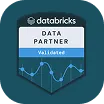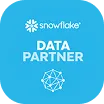How Article Scraper APIs Enhance Research and Improve Data Insights
Learn how an article scraper API transforms raw data into structured insights for smarter, faster decision-making.


Manual, piecemeal scraping used to be the main way that enterprises collected web data. That usually meant a patchwork of manual scripts, brittle bots, and constant maintenance. For many enterprises, that’s still the case. Thankfully, article scraper APIs now make it all faster, smarter, and infinitely scalable, without the heavy lifting.
Any enterprise that needs reliable, high-quality data can’t afford to overlook these tools. And in 2025, that’s virtually all of them. Researchers tracking global trends, retailers monitoring competitor pricing, and data analysts all share a growing need for this kind of data. In all of these industries and applications, outdated scraping methods cannot keep up.
Keep reading to find out how article scraper APIs turn raw online information into actionable insights, instantly and at scale.
What Are Article Scrapers and How Do They Work?
An article scraper is a tool that automatically extracts content from online articles, news sites, and blogs, converting unstructured data into a structured, usable format. These tools use web scraping techniques to collect, parse, and deliver data for research, trend analysis, and content aggregation.
Data is everywhere, but without the right tools, it’s just digital noise: unstructured, untapped, and unusable. Article scrapers help make sense of this vast information by transforming scattered online content into structured insights.
How Article Scrapers Work
Traditionally, data engineers have used custom-built HTML scrapers to gather data from articles. These often struggle with dynamic content, bot detection, and evolving website structures. As websites introduce CAPTCHAs, dynamic content, and bot detection, traditional scrapers yield diminishing returns. They frequently break because websites change their structure, leading to IP bans, failed extractions, and wasted hours troubleshooting outdated scripts.
Scraper APIs offer a more robust and adaptable solution by integrating advanced access restriction bypassing, intelligent IP rotation, and automated parsing. Unlike traditional scrapers, which rely on browser scraping techniques to manually navigate web pages and copy content, scraper APIs streamline the process by automatically extracting structured data: headlines, full articles, author names, and publication timestamps.
With an article scraper API, businesses can skip the hassle and focus on analyzing data, not fixing scrapers.
How Scraper APIs Simplify Article Extraction
A scraper API provides a ready-made solution for extracting content at scale, enhanced by capabilities like:
- Website compatibility to automatically adjust to different website structures.
- The scalability to process thousands of URLs simultaneously.
- Anti-bot evasion to bypass access restrictions and CAPTCHA roadblocks.
- Structured data delivery for clean, organized results in real-time.
How Article Scraper APIs Work in Practice
To understand how this works, let’s break down a typical scraper workflow:
- Request Data: A user sends a request to the API with the target website URL.
- Fetch & Process: The API visits the site, extracts relevant content, and formats it.
- Bypass Restrictions: Using smart techniques like rotating proxies and fingerprinting, the API avoids detection.
- Deliver Clean Data: The extracted information is returned in an easy-to-use format (JSON, CSV, or database-ready).
For example, a financial research firm tracking news on market trends can use a news article scraper API to collect articles from major financial websites, extract only the relevant sections, and feed them directly into analytics dashboards. With a scraper API, this all happens in real time, without manual intervention.
The Top 5 Benefits of Using an Article Scraping API
For veteran analysts accustomed to scrambling to collect industry news, competitor updates, and market trends, an article scraping API is a truly game-changing advantage. Here’s why businesses and researchers are making the switch.
1. Automated and Scalable Data Collection
Researchers can gather massive datasets in minutes, not hours. Instead of crawling through websites one by one, an API fetches structured data instantly, handling thousands of URLs at scale. This means less time hunting for data, and more time analyzing it.
2. Real-Time Insight on Competitors
Staying ahead means tracking what’s happening now, not what was published last week. With a scraper API, businesses can monitor competitor pricing, product launches, and customer sentiment in real time, allowing them to react quickly to market shifts.
3. Data Accuracy and Organization
Some websites structure content differently, while others add unnecessary formatting that requires complex parsing and extra cleanup. An article scraping API can gather diverse data types from web sources with different structures and deliver it all in a uniform format as clean, structured data, complete with metadata like publication date, author, and keywords.
4. Saves Time and Resources
Research suggests that data professionals spend up to 80% of their time just cleaning and organizing information, leaving little room for actual insights. By automating the data collection process, an API cuts down manual labor, reduces human error, and slashes operational costs.
5. Integrates Seamlessly Into Existing Workflows
An article scraping API should be able to communicate with an enterprise’s analytics platforms, BI tools, machine learning models, and internal databases. For example, Nimble’s Web API offers plug-and-play compatibility that enables effective, data-rich decision-making from the very beginning.
Request a demo and see how Nimble transforms your data collection process.
Real Use Cases for Article Scrapers in Research
The demand for real-time, structured data is skyrocketing across the board. As a result, the list of use cases for article web scraping continues to grow. Whether they’re analyzing trends, managing brand reputation, or conducting sentiment analysis in retail, organizations are increasingly choosing to use an API for web scraping, rather than HTML scrapers and other methods that can’t keep up with evolving website structures.
1. Competitive Intelligence and Market Analysis
Your competitors’ strategies, pricing, and product offerings are the blueprint for smarter, more strategic moves. A good article web scraping API offers an efficient and compliant way to peer over your industry’s shoulder by:
- Tracking competitor mentions in news articles and industry reports to monitor their market presence.
- Extracting insights from press releases and executive interviews to analyze branding and messaging shifts.
- Monitoring media coverage on emerging trends and regulatory changes to stay ahead of industry shifts.
For example, an e-commerce business might use a news scraper API to track sales and promotion announcements from competitors, and then use that data to quickly implement competing promotions.
2. Consumer Trends and Behavior
Understanding what customers want, expect, and discuss online is essential for businesses to stay relevant. Article scraper APIs help uncover emerging trends and shifts in consumer behavior by extracting data from blogs, news sites, and industry reports.
For example, a fashion retailer could scrape articles from fashion blogs and influencer websites to spot emerging color palettes, patterns, or styles before they gain mainstream traction.
3. Reputation Management and Sentiment Analysis in Retail
A brand’s reputation can change in a single viral post. Sentiment analysis in retail plays a critical role in helping brands measure public perception and address potential PR issues. With article scraper APIs, companies can monitor their brand mentions in news and media and detect negative sentiment proactively.
An international hotel chain might use an article scraper API to track media coverage, industry reports, and travel blogs discussing hotel trends and guest expectations. They can use this information to identify emerging preferences and service gaps.
4. Content Aggregation for Research and Analysis
Innovative businesses thrive on research and are constantly analyzing and interpreting data to develop new products, optimize processes, and drive technological progress. To do that, they need to process a large volume of high-quality sources like thought leadership articles and entries in academic journals. For them, the principal advantage of a scraper API is in simplifying content aggregation, and eliminating the manual legwork of sourcing, organizing, and structuring data for analysis.
Is it Ethical? The Legality of Article Scraping
Copyright laws, fair use, and website terms of service introduce a layer of legal complexity to the task of scraping web data. As websites have introduced bot detection systems and structured security measures, this has only become more challenging.
Enterprises need to thread the needle between compliance and efficiency, accessing the data they need while respecting legal boundaries. When done properly, article scraping is legal and ethical, but it requires a clear understanding of content restrictions specific to news sources, blogs, and other editorial platforms.
Unlike general web data, articles often come with publisher agreements, paywalls, and syndication rights that limit how third parties can collect and use their data. Many news platforms also have exclusive licensing agreements with aggregators, making it crucial to follow best practices and ensure proper use of scraped data.
By adhering to website policies, respecting copyright laws, and leveraging ethical scraping techniques, businesses can extract valuable insights while staying on the right side of the law.
Compliant by Design: The Nimble Article Scraper API
Nimble ensures compliance by embedding ethical scraping practices directly into our technology. The system is designed to respect website policies, adhere to global data regulations, and minimize disruption to web servers.
Our technology is fully compliant with GDPR, CCPA, and other major data privacy laws, ensuring that every request aligns with legal and ethical guidelines. Nimble always respects a website’s robots.txt file, preventing unauthorized data collection and prioritizing responsible scraping practices. Browser fingerprinting technology further enhances compliance by mimicking natural user behavior, reducing detection risks while maintaining ethical data access.
By adapting to bot detection mechanisms, managing high-reputation IPs, and enforcing strict security protocols, Nimble enables seamless, responsible data extraction without crossing ethical lines. With built-in compliance measures, transparent scraping parameters, and intelligent automation, businesses can confidently leverage the power of data while staying fully compliant with legal and ethical standards.
Nimble’s safety and compliance features include:
- Adaptive to Bot Detection. Nimble’s technology intelligently adjusts to evolving security measures for smooth, uninterrupted scraping.
- Built-In Compliance. Every request is optimized to respect website policies, ensuring ethical data extraction.
- Intelligently Managed. Nimble automatically routes requests through a network of rotating residential proxies, ensuring ethical data access without disruptions.
Web scraping relies on IPs and proxies to access and extract data without getting blocked, but not all scraping APIs handle this for you. Many require users to source and manage their own proxies, adding complexity and cost. Nimble eliminates this hassle by automating IP traffic routing and including built-in proxy management, ensuring seamless, uninterrupted data collection. Our intelligent proxy rotation distributes requests across high-reputation IPs, bypassing rate limits, bot detection, and geo-restrictions, so you can scrape efficiently without worrying about bans or blocked requests.
How to Use an Article Scraper API in Your Research
To get the most out of an Article Scraper API, you need to know how to use it effectively.
Here’s how to make the most of a new scraper you have added to your tech stack:
1. Define Your Data Needs
Before moving to API integration, outline exactly what information you're looking for. Are you tracking mentions of specific products? Analyzing sentiment around industry trends? Gathering statistical insights? Pinpointing these goals will help you refine your search and ensure you’re collecting the most useful data.
2. Customize Your API Queries
Every enterprise has unique needs. A good scraper API allows for customization to address these specifics. It should allow you to:
- Specify target publications, keywords, or topics.
- Filter by date range, language, or region.
- Extract structured metadata, such as author names, publication dates, and summary content.
By tailoring your queries, you ensure that the data you collect aligns precisely with your research needs.
3. Execute the Scraping Request and Process the Data
Once you set parameters, the hard part is over. Executing the scraper is as simple as making a request to the API. The response will typically return structured data in JSON or XML format, making it easy to parse.
4. Analyze and Apply Your Findings
Now that you have your dataset, it’s time to extract insights. Depending on your research goals, you might:
- Use text analysis tools to identify recurring themes or sentiment trends.
- Leverage data visualization to track changes over time.
- Integrate with BI platforms for real-time reporting.
The real value of an article scraper API is in streamlining steps 1-3, so you can focus more on step 4. For example, in industries like retail and analytics, organizations can take that structured data and start monitoring competitor strategies or uncovering emerging consumer trends.
Automate your research—integrate Nimble’s Web API today.

Scale, Speed, and Security: How Nimble’s Article Scraper API Raises the Bar
Data is common, but precision is rare. Nimble’s Article Scraper API offers an intelligent infrastructure, reinforced by high-performance IPs, and optimized with AI-powered parsing. Key features include:
Ease of Use
Nimble’s full-featured API integrates seamlessly into any project, providing instant access to structured data with minimal setup. Unlike other solutions that require extensive engineering work, Nimble handles the heavy lifting for you.
With automated proxies, intelligent IP rotation, built-in parsing, and adaptive content structure adjustments, you don’t need to configure or maintain complex scraping infrastructure. Our intuitive management dashboard, streamlined BackConnect Gateway, and detailed documentation make it easy to get started.
Scalability
Whether you need a small data sample or large-scale web scraping, Nimble’s batch processing scales to any demand. Our millions of managed IPs ensure availability and performance, so you never have to worry about hitting limits or delays.
Compliance and Security
Untangling data collection laws like GDPR and CCPA can be time-consuming and frustrating. Nimble prioritizes compliance with built-in safeguards. Based on thorough IP reputation management, requests are routed through proven, secure IPs to ensure ethical data collection and minimize blockages.
Performance
Speed and reliability are at the core of Nimble’s technology. High-performance IPs optimize for speed-sensitive applications, ensuring rock-solid stability, even for long-running tasks. Plus, AI-powered parsing guarantees perfect accuracy in structured data delivery.
Support and Documentation
Nimble’s step-by-step documentation ensures a smooth integration process, so you’re never left guessing. Professional users receive ongoing support from Nimble Labs experts to help them maximize results.
Take the Hassle Out of Data Collection with Nimble’s Article Scraping API
Sifting through articles manually or wrestling with unreliable scrapers is a thing of the past. Nimble’s Article Scraper API pulls structured, real-time data instantly, so you can skip the busywork and focus on insights. Track trends, monitor competitors, and analyze sentiment with zero friction. AI-powered parsing ensures perfect accuracy, while millions of intelligently managed IPs guarantee speed, stability, and access to even hard-to-reach sources.
Use Nimble to extract the data you need quickly, reliably, and at scale, so you can make informed decisions without the technical headaches.
Ready to Scale Your Research? Start a Free Trial of NImble Today!
FAQ
Answers to frequently asked questions

.avif)


%20(1).webp)







